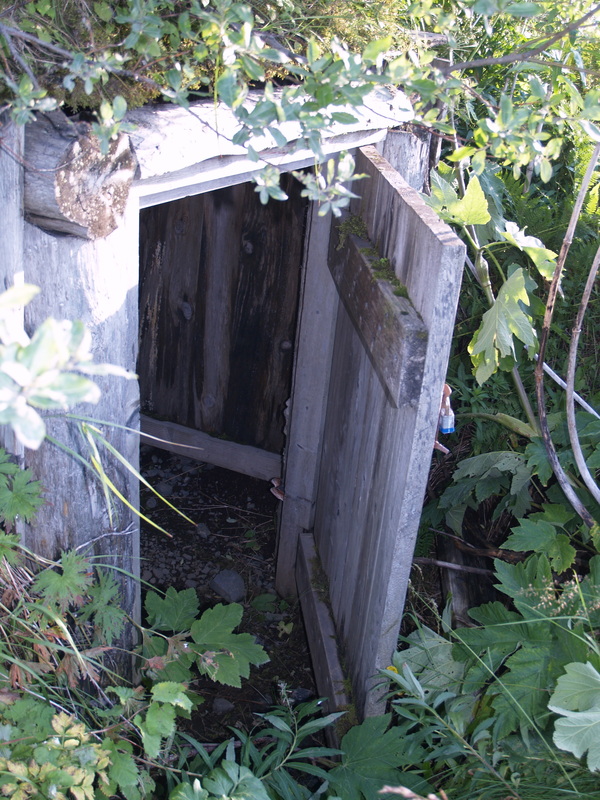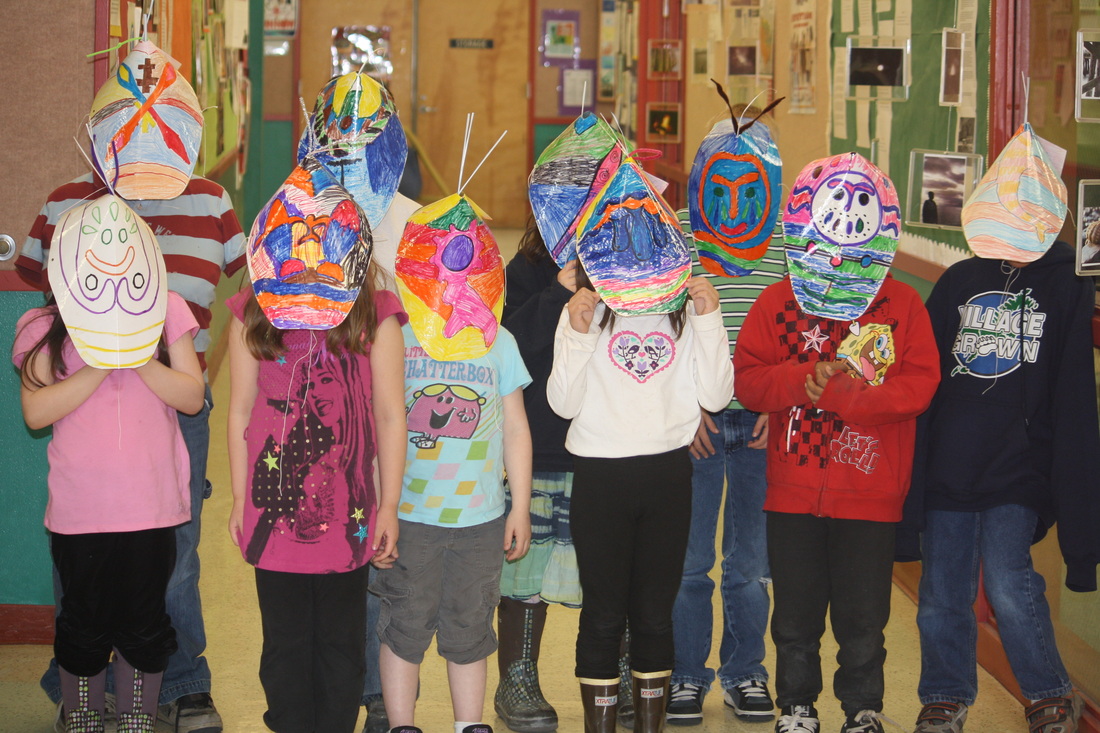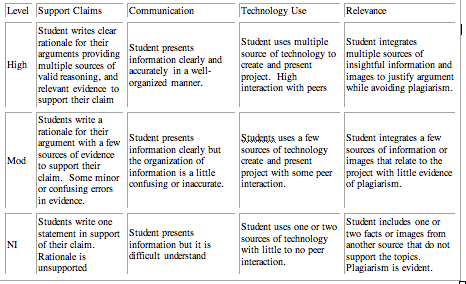How will I demonstrate impact on student learning as a result of my differentiated lesson?
The big question all teacher have is, “Did my students get it?” One of the best ways to know if your students get it is by using a pre & post test assessment. But the hardest parts about a pre-test is it can discourage students because in some cases they may not know anything about the topic. When I start a unit it is great to have the students struggle through that pre-test then at the end of the unit take a post test. If you graph the two results the kids see the growth and feel proud. The is a great method for a cycle of inquiry to assess what you need to re-teach or to see if your student already know the information. When using pree and post assessments you have data to talk to your collegues about and it fosters collaboration.
My favorite way to do a pre-assessment is an oral discussion about what the students already know. I feel this is a way for the teacher to know where the students are at without making them feel discouraged. I often record their initial answers in a bubble chart. My favorite bubble chart to use on my iPad is Popplet, then after the lesson they can add details at the end of the lesson to elaborate on what they learned. This then puts a pre and post assessment in only place. Another method I use is a journal entry where the students write whatever they already know by asking them a question like, “What makes the sun rise each day?” Then at the end of the ten-minute journal time I ask all students to draw a red line (the line of learning). Then at the end of the lesson they add to their original thoughts by expanding, clarifying or giving a better answer. I also love exit tickets as a way to assess students as they walk out the door. This is a simple 2-3 question “quiz” that students answer or they can ask a clarifying question if they don’t understand the questions. This give me an immediate feel for what the students learned before we change topics. My exit tickets have been done on index cards before I had technology then I did them on clickers or in the class chat box on Illuminate. With iPads in the classroom you can get the student clicker app -student clicker socrative to get immediate data from your students. The key in whatever strategy you use is to make sure the post assessment is something you covered.
I thought finding a new tool to differentiate in the classroom so easy since new tools seem come out every day. There are so many apps that can be used in the classroom and websites that get better and better, that I thought this would be an easy task. Then I put into the equation that I am in a rural community with limited internet access and new cell phone service. Then this assignment grew into an ever bigger challenge. I loved the ideas behind the augmented apps to incorporate the world around us. I was excited to try them out on my android phone. But then I realized that without cell service the apps would not work. (While we just got cell service within the past month only ACS works here and I do not have an ACS phone. My T-mobile phone only works when I travel.) So then I decided to try the cool Fetch! Lunch Rush iPad App only to not find it in the App store. So I had to go back to my trusty computer to find an internet tool. Hark!! I found a tool I just love, Class Dojo. I was so excited about the site I created a fake class to try it out. Then I used my 4 dogs as students to reward them with little monsters dojo points for their positive behaviors. Unfortunately, they did not respond well to the digital rewards. But I can totally see students loving the program. This site is an ideal way to track student behavior while giving them instant feedback in the classroom. While the younger kids would enjoy it most, it is so usable for secondary students too. It is cool to have the iPad version that links to your computer, students and parents. I am sold on the positive reinforcement this site offers and opportunity for metacognition. One of the first applications I would use this site for is to track skills based on individual student need and their SBA results. I would create target areas for each student and as they complete their individual skill work they will receive dojo points and it will give me a quick tracking device to share with parents. This tool could help me differentiate the classroom without other students knowing their skill levels. It allows me to challenge the advanced students and give additional support to those who are struggling all in one place. I would also use this app to monitor and improve student behavior. I would set up rewards for scholarly behavior. This rewards would allow me to target the behavior needs of the students as well as the academic needs. As a middle school teacher, the idea of getting kids to stay on task has been my biggest challenge. It would be a great way to keep the students focused and offer rewards for their positive behavior. I have shared the site with our local teachers but since it is the end of the school year they were not very interested. I am hoping to convince our elementary teacher to try it next year. I have also shared it with our 1 home school family to try as a tool to help them stay on task. The ClassDojo site has a great share page with resources to introduce it colleagues and students. And best of all it is free! Check out this video to learn how to set up your own class and try out Class Dojo.
 The traditional baraba has been replaced by the modern home. Will traditional teaching be replaces by the digital age?
Video games in the classroom, oh no!!! In today’s digital world, it is hard to get the students off their gadgets. But what if we could find a way to productively integrate them into our classroom. Too often “educational games” are used to fill time and there is little emphasis on their educational value and students are not given credit for their progress on a video game. I have often seen video games used to master memorization activities that are along the drill and kill lines. While many teachers are against memorization, if a game helps our student learn their basic facts let’s use it. With iPads being pushed into many classrooms, I have struggled as a teach to find a “good use” for them beyond filling time in the beginning. Once I felt the classroom, I could not live without mine. I use it for everything but I still have the desire to find strong apps for the classroom. So I started looking for math apps that went beyond the “drill and kill” sequence. I also wanted to make sure students were getting regular feedback and was engaging for the students. Then I searched for apps that truly supported student learning and could be integrated into a classroom. I worked with a home-school teacher and a 3-6 teacher to explore these apps. (There is also an Algebra version of this app as students move up in school.) Mathemagics The name itself excited me. Mental Math is a crucial skill for students to develop that is more often assumed rather than explicitly taught. I have had several students come to me with “tricks” they learned from another teacher or parent, but I never really took the time to teach them. Kids, and adults, are always looking for shortcuts and “the easy way” in math. So here is an app to explicitly teach tricks and techniques to help students get beyond the numbers into higher-level concepts. This app allows kids to learn, practice it then play a game. As they increase their skills they move their way up the ranks from an apprentice to a Mathemagician. The get immediate feedback on their work with tips to help if they get stuck. As a teacher, I would totally use this app as in intro to our daily lessons to get their brains in the math mode. In the past I would put minute math on the board for all students and a problem of the day. The problem with this method was it was too general and did not differentiate the introduction. Through Mathemagics each student would be working at their pace and their ability levels. Students who tested this game would ask for more time to get to the next level. (I only gave students ten minutes of time on the game so the lesson could begin.) In order to asses the students, I would give them verbal mental math problems to solve individually when they were ready to “beat the calculator”. The students got feedback form the games as well as from the teacher as we had daily challenges to “beat the calculator.” The biggest benefit I saw with the use of the app was an increase in computation skills which in turn increase the students ability to manipulate fractions, the unit they were studying at the time. Monster Physics While physics is one of the most engaging forms of science, I was a teacher who avoided it like the plague. I always let the topics were too complex for me let alone teaching the to kids. But with apps like Monster Physics I think I could really build a strong physics for my students. This app allows them to “play” without necessarily realizing they are learning. Students get to create virtual inventions and solve missions to test their knowledge. Then we actually build them in the classroom to prove our physics. This app is a great way to introduce and practice concepts we are exploring in class. It is aligned nicely to the state and national science standards with general topics that fit multiple grade levels. I tested the app on my lunchtime science group of students 1st through 6th grade. They all loved it. The kids were engaged and there was very little frustration level, even with my youngest student. We were able to demonstrate student learning by creating our inventions in our lab after they explored on the iPad. We had so much fun with this app, I recommended it to the designers I work with at UC Berkley to be incorporated as a supporting activity for their FOSS units. The teachers I shared it with all immediately downloaded it for their classes. Now, It is time to write solid lessons to incorporate it into my physics lessons. (This producer also has Stack the States, Stack the Counties and Presidents vs. Aliens that students love to use in their “free time”.) Brain Pop The school Liberian suggested this site to me for part of my lunchtime science class. She suggested it as a tool as students were waiting for others to arrive. Now, I share with my colleagues too. Once I got the kids started on Brain Pop, I could not get them off. Every day there is a new movie or topic and it covers so many content areas. This game can be used to reinforce concepts taught in the classroom, to practice skills and play games. This app is also on-line so it can be played on the computer or on a tablet. While I would use this as a “free option” in the classroom, it can be a great assessment tool too. While it focuses on the movies and quizzes, the students enjoyed the games that were on-line. They got immediate feedback and often scored higher on the brain pop quizzes after playing the game. The standards like on the website makes it easy to transition it into your lessons as part of your curriculum. (The website is the best place for teachers to go for lesson planning.) As much as I want to incorporate hands on learning in the classroom, I am convinced that video games may be a great alternative or lead into lessons. I have so many more games to explore. I think as educator it is important that we find ways to integrate the traditional world and technology into our curriculum to build the "whole" child. PS I tried to get into Mine-craft as many of my colleagues in this class had been talking about it. But I had a terrible time connecting it to the AK standards while I can see it building so many spacial and logic skills.
 Are we creating symmetrical or asymmetrical lessons for our students? Are we reaching all of our students or are a few left unnoticed in the crowd? Through differentiation, we can offer a balanced approach that reaches most of our students. Those few that are just cruising with the crowd need the chance to shine too.
Well, my excitement for an inter-island debate has faded into the past. Not being a classroom teacher has made this project a little challenging for me. The teacher I had been collaborating with, decided "I have no time to do another project with my class." So I am back to ground zero. But luckily, I have been collaborating with other Environmental Specialists to create a new project. So after great collaboration with Dr. Graham and a few classmates I have a new idea. In honor of Earth Week, a few teens and I will create a community outreach activity to teach adults in our community about Air Quality in our homes. We will host 4 booths for community members to rotate around. Each teen will research a topic and then present it the community. Then another teen will video tape the activities and take photographs. In the end the tens will create a video about the night to share with Northern Arizona University. So after a week of collaboration and a little reassurance from my professor I think I have a plan. Now, I have to find specific standards for this project and recreate a rubric. To accomplish this project, the teens will be using a cricuit machine and a computer to create their display boards about their project. They will be using the internet to research their topic and gather material for their display boards. Each student will explore the use of word clouds by creating their own unique method of sharing their research through the use of sites like wordle, tagxedo, wordsift or tagul. Then they will be using a video camera to demonstrate their knowledge and present it to other high school and university students. The students will be given the choice as to how they want want to create their final presentation but will be encourage to use Glogster, voicethread, and/or iMovie.Since I am working on my project outside of the school day, classroom management will note be major issue. Our biggest issue will be using the one computer we have access too and it not a Mac. The teen are used to using a Mac in school so they will be "forced" to use a different computer. I will be challenged to keep the teens motivated through the project and be able to support their progress as they are each working on different projects at the same time with only 1 computer. So there will be a lot of time management to ensure everyone has adequate time to complete their project. One of the key components of this project is ensuring I know how to use each piece of technology before I introduce it to the teens. I sure miss having a technology teacher around to help me explore options....Oh wait that is supposed to be me so I better just get out there and explore. I wonder which of these tools they have used before? I know a few of them have used iMovie before but then is there a compatible program on the PC? My main focus this week is learning about a compatible movie making program on the PC so far the internet limitations on downloading ha made this a difficult process but I will continue to search for the right answer with our bandwidth considerations. You can check out the word cloud sites on my Pinterest site.
It is easy for teachers to follow the text book or assign another PowerPoint project. While our students are doing what is asked are they truly getting any major benefit by doing another project? Is this project reaching all of your students needs? Students will light up with joy when you give them a choice of how to present what they learn. They will explore new avenues and create demonstrate incredible knowledge if we just open the door for them. Here is a sample project to show how easy it is to differentiate instruction by giving student the freedom of choice. While all students are using the same standards they have multiple methods available to display their knowledge.
Alaska Anchor Standards for Writing Grade 6-12
1. Write arguments to support claims in an analysis of substantive topics or texts, using valid reasoning and relevant and sufficient evidence.
2. Write informative/explanatory text to examine and convey complex ideas and information clearly and accurately through the effective selection, organization, and analysis of content.
6. Use technology, including the Internet, to produce and publish writing and to interact and collaborate with others.
7. Gather relevant information from multiple print and digital sources, assess the credibility and accuracy of each source, and integrate the information while avoiding plagiarism.
Students will be given 1 hour to search for information on cell phone use in schools. Students will randomly be assigned to be for or against cell phone use in school. Then they will be teamed up with 2 other students from other island schools to create a persuasive argument either for or against the use of cell phones in school. This argument will be presented using the medium of their choice some recommended mediums are: glogster, garage band, prezi or voice thread, additional mediums are acceptable if presented to the instructor. Be creative, have fun and try something new
 Pearltrees
Oh no, another website to track! Was my first thought as I got the invite to pearltrees. I actually deleted the e-mail until I realized it was a class assignment. I am still trying to figure out the site but I think it has potential.
Pearltrees is a new way to bookmark sites and "cultivate your interests". I struggled to find information about exactly what the site was about. It is designed to allow people to collobrate and share information. It seems very similar to pinterst with the communication addition. This feature is where the collaboration can truly happen. You can send private messages or have a group chat. One of the great features of this site is the ability to pick pearls from other pearltrees and add them to your own. I enjoyed creating my tree for our project, it is easy to create the links. A feature I liked was the opportunity to add a note. I could totally see using this site to help students organize their own projects.
Unfortunately, this week my entire group did not connect well so we did not use pearl trees. We resorted back to Wiggio where we were more comfortable. I am still a little lost at trying to keep up with all the various sites. Yet, I have enjoyed exploring all the new tools I am trying to get my mind around ways to incorporate them into my curriculum plans. It is wonderful to expand beyond the Facebook phase, yet I wonder how long many of these sites will last. I would have liked to have more interaction with my peers for this week to really see the
“If a man does not keep pace with his companions, perhaps it is because he hears a different drummer. Let him step to the music which he hears, however measured or far away.” Henry David Thoreau
As teachers, each year we get a new set of drummers that walk into our classroom while we are marching to our own drums. The biggest challenge all teachers have is finding a way to get the drums to work in harmony through differentiation. Each student has their own set of talents and weakness. Students will naturally gravitate towards their talents and things they are good at. The teachers fill the gaps in their weaknesses. Unfortunately, in a class of 20 students there are often 20 different areas for teachers to support. So creating a large tool box to support your students is where differentiation comes into play. Sometimes differentiation is changing the number of problems assigned when other times it is having a note-taker for a student. The key to differentiation is finding ways to support your students so they can be successful, adapting to their needs as an individual. Differentiation can be as easy as allowing a student to use a calculator in class When I think of differentiation, I think of literature groups and math groups based on various ability levels. But differentiation goes beyond just creating groups it is also finding ways to make all of the materials accessible to the students. Addressing the various learning styles within each lesson, offering multiple instruction mediums and adapting activities for students are all part of the differentiation process. One of the strategies that jumps out to me is to using multiple mediums to present the same topic like having students write their vocabulary words, act them out and sing them is one way to support student learning. I love the tutorials that have been created for this class and that I have found on youtube while exploring during assignments. This has inspired me to want to create my own video tutorials to support student learning. While I still have to explore sites like screencast-o-matic and storify, these would be a great way to differentiate a lesson. Audio books and student recordings are other ways to differentiate our classrooms. Students who struggle with reading can listen to the books while reading along in an eBook. Students who struggle with writing can take a test by answering in an audio file and using a dictation device to write their stories. It all boils down to adapting the activities to meet the students where they are while still challenging them. My favorite part of teaching is finding ways to differentiate for my students. The first place I always start is talking to my special education teacher. They are full of tricks we often forget about or never knew. The only problem is it can get very tiring trying to keep up and do it with every assignment. But in the many years I have been teaching differentiation has evolved. We have moved beyond tape recorders and transparencies (I think I still have a case of recorders and cassettes hidden in my storage that have been replaced new technology) into the digital world of technology. There are so many new tools for us to use that makes the world of differentiation easier. Take the time to check out this week’s pinterest for tools to support differentiation within the classroom. I had to stop at 20 because there is so much out there to support differentiation. The Twitter sessions and Connectivist List gave me even more sources this week. I have a list of 16 other sites still to explore recommended by my peers.
 Will digital tools lead to the closing of our school doors?
There is so much technology it is hard to keep up. As soon as I think I have one tool down, there is a new one to explore. My project group really pushed me to try new tools like Wiggio and embedding videos into our Wikispaces. Even when the technology did not work exactly as we expected everyone was quick to find a new way to get the job done. I never imagined it would be possible to really do a group project in cyber land but my group proved me wrong. I believe everyone worked together and did their part to make create a resource we could all use in the future. One of the key pieces is that we always had someone willing to be the “leader” of the group. While this role changed there was always someone willing to step up and get us rolling. When I think about applying a virtual team project to students, the leadership must be taught and embedded into the project. For adult teachers, I think this was a natural process but for youth I think this is a skill we need to develop through modeling, practice and very clear expectation. Providing rubrics and checklists were helpful to me. I was also thinking about the student who doesn’t normally participate or do their work how do we get them engaged in a group project like this? How do you differentiate for your students with special needs without bringing attention to the student? I can see creating Wiggio groups fro my students now and helping them set up their tasks and projects. I can picture doing many group projects this way and allowing student to track their own progress. When students are able to break a project down into smaller pieces they might not see it as so daunting. The sense of accomplishment will grow as they mark each task done. Student can create their own checklists using Wiggio too and collaborate on individual projects to support each other. While in our groups work we did not use Trello, I can believe it would be a great tool to help differentiate within the classroom. Often times, students need to set a different pace or have a modified assignment. Trello offers a platform to publish an assignment and make modifications for individuals without the peer knowledge. The stigma of groups can be eliminated. Like in Wiggio, Trello allows students to break projects into workable parts. I thought the kinesthetic action of moving an assignment into the “doing” column would help give students the visual reminders about their work. This also serves as a great place to place support documents or tutorials that reach students at multiple levels. Out of all the new tools, I have explored I am sold on Evernote for portfolios and student notebooks. I see so many uses from progress monitoring to taking class notes and doing projects. The skills they develop using these tools can easily transfer over to the professional world as they transition out of school. The one tool we have used extensively in this class that I am still not sold on is Twitter. While I can see its uses and benefits, to me it is just another place to get lost in cyber land. I have read several articles that are swaying me, yet I am still not sold on using twitter. To me, I see it as another way kids will be bullied and an easy distraction in class. But maybe in time, I will be convinced. Don't forget to check out new resources on my Pinterest page.
The cloud is a tool I have not used effectively. I have been part of the mobile me network for over 3 years yet I have used it very little. I love that my calendar and address book is connected on all my apple devices and I can use my work PC to make changes or updates to them. So it makes me feel connected but then I know there is so much more to the iCloud service that I am not using beyond syncing. Last fall, I downloaded dropbox and even tried to share some pictures with a colleague but I never heard anything if they were ever used. Then we used dropbox in a class at UAS. It was an easy way hare my assignments with the professor. Then I realized that it was a great way to bring my work home with me at night. As I was writing grants or working on a project, I just save everything in my dropbox and I can get it on my iPad, my pc or my macbook. So after being “forced” to use dropbox in my class, I now use it regularly. Once I figure out how my professor set up all her students, I can totally see using it in the classroom. Students can post their work in the drop box and I can add comments to it in the margins using notes in word. Making dropbox an easy tool to help student improve their work and give them feedback at their pace. .
Evernote is another tool that would be great to use on student portfolios. Students can capture their work on in Evernote by taking a picture of the page or scanning it into a computer. Then the teacher could attach a video comment on the assignment to give them feedback. While I have personally used Evernote to take notes at meetings and trainings, the tutorial in our module taught me about making notebooks within Evernote to organize my notes. This past week, I was at a training watching a colleague type into the iPad notes program so I showed him my Evernote and how to use the notebooks then open them on a computer later. He was sold on the app. This made me think about using ever note as a study guide notebook where students could create a notebook for each topic covered then they would have a full set of notes to review for finals or help them with assignments. These can be uploaded for the teacher to review and offer support for each student.
I have found the use of Penultimate to be a useful tool to correspond with my science students because I can use it with younger students on the iPad. The students can write using a stylus or their finger and label a diagram they draw. The students do not spend time pecking away at the keyboard and they can write right into the notebook. Then I can add comments to their work. UPad is another similar program I am just exploring, so far I can see using it for responsive reading and teachers being able to see the notes of their students within PDF documents. There are so many options out there as we explore the cloud.
I have a few questions about using the cloud. Living in rural Alaska, I wonder how effective we can be using the cloud when there are so many days there is not a strong signal to upload and download files. Is this really an effective answer? I wonder how much in the cloud is accessible by outside entities. I realize there are password protections but then things still seem to get out of the cloud. So how can we truly protect our students? How long are things available in cloud? When we stop using it where does it go? I can see each year teachers setting up new systems and accounts for their students so Johnny Smith will have at least 12 different cloud accounts by the time he graduates from high school if not more. Does all this “paperless” work really reduce our carbon footprint if it takes huge amounts of energy to keep these clouds running?
It is amazing to me how much is out to the world through the Internet. While the Internet has enhanced learning in many cases, it has also put many of our students at risk. As educators, it s up to us to help guide our students in using all these tools and how to post on-line respectfully. Unfortunately, the more the kids learn the more our student are exposed. The hardest part as an educator is knowing that everything that is posted is there for and can have implications later in life. While as a teen they are writing a harmless story as an assignment when it is in the cloud or on-line it is available years later as they are applying for a job or trying to get into the military. What is innocent chatting is a record that can be followed. The fact that everything put in the cloud is accessible makes me leery of using it in the classroom. It makes me wonder how much of my cloud can been seen.
Check out the articles I’ve found on the cloud in education as well as how to use these applications in the classroom.
http://pinterest.com/bbarnowsky/the-cloud/
 Don't let your student work get washed away in the rain. The digital age has given us so many options to preserve student work and capture learning.
With high stakes testing a the pressure to increase proficiency, traditional portfolios have been lost in the rush of covering all the material. Too often we get to conferences and have lots of data to share with parents and families about "where their student is academically". Too often this creates added stress and pressure to our students. Through the use of portfolios we can easily share the data of their students as well as their successes. How cool would it be to allow a family to hear audio for a child fluently reading a poem with an illustration or piece of art that shows the child's interpretation of that poem. The technology of today has made portfolios feasible again. Teachers can track student progress and document student work using Evernote as they walk around the room on a tablet then review it later on their laptops. This is a quick and easy way to create student portfolios with little class time taken up. Students can track their own progress in using a digital notebook like Penulitmate on a tablet or Upad. I am in awe of the features of UPad. I can just imagine uploading textbooks or novels into Upad and having students take notes as their reading. Literature Circles could be so rich using this App. I can see students learning how to study again using this app it makes reading so much more engaging. Unfortunately, it is only available on an iPad and there is not a laptop version yet. Using just a computer, creating a student portfolio page using Yola might be a great alternative. They can create multiple pages based on subject matter or create a blog to record their monthly writing projects. Pictures, videos, scanned copies of work can all be added to their Yola site. The biggest catch to this is that students must be at least 13 years old to have a site. While this is the rule for many other sites like Facebook and BlogSpot, students always find a way around this rule. But if you are teaching younger students it is not recommended to head down this path. I am still looking for a blogging/student website place for upper elementary students to explore. This week has been filled with new experiences for me. My group is using Wiggio to communicate about our team project. This is another first for me, wiggio might make my mind go wi I have struggled to figure out how to join a group but finally a group added me to their WikiSpace. While Google Groups was a good initial place to meet classmates. I have found it difficult to track things there. I will press on and to continue to connect with my peers using this method even though I am struggling with it Maybe I need to watch another video on using Google groups effectively. The Twitter Feed is full of ideas to explore and the resources tab has even more sites to check out. I have posted my favorite collaboration tools I discovered this week at my Pinterest Site on Collaboration. Teambox is one site I would like to explore further. I can picture using it for team projects. The part I really like about this site is as the teacher creates the teams and invites participants they can see the work of each student. This would help the teachers monitor the progress of the groups as well as see who can use a little extra guidance. As an AmeriCorps RAVEN member, I am working with another member to build a Trello site for other members across Alaska. While I am still fumbling through the site, I can see it as a wonderful way to share ideas about multiple topics and support each other. I like that is is set up like quick notecards and not extensive writing to post documents and share links. I hope to be a productive contributor to our Trello site.
|










 RSS Feed
RSS Feed